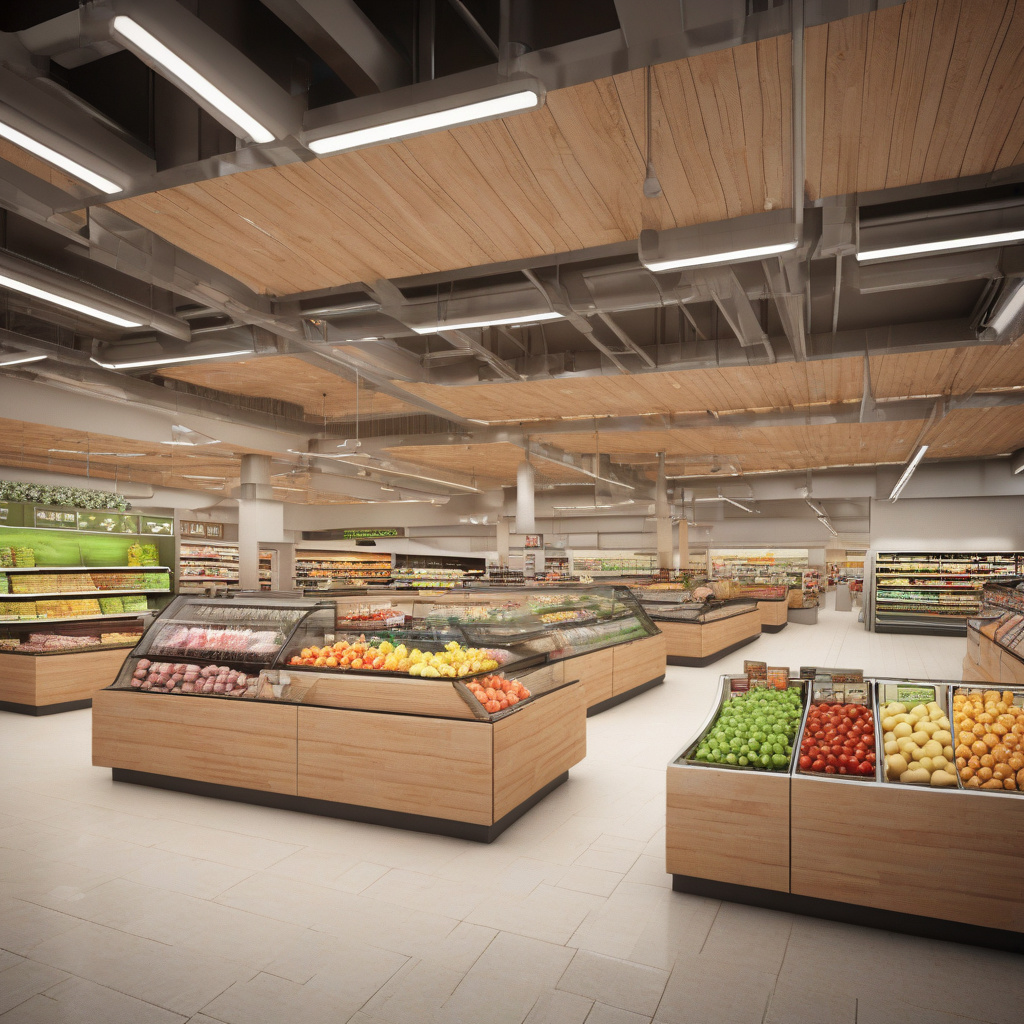Grocery Stores Emerge as the Last Piece to the Mixed-use Puzzle
In a landscape marked by fluctuating economic conditions and changing consumer habits, grocery stores are increasingly becoming the linchpin in mixed-use developments. This movement is not merely a trend; it reflects a profound shift in how communities are designed and how businesses operate. With a low retail vacancy rate of 4.1%, the demand for grocery stores is surging, positioning them as essential components in the revitalization of urban areas.
The pandemic catalyzed a significant transformation in shopping habits, as consumers turned to local grocery stores for their everyday needs. In this context, grocery brands like Aldi are taking bold steps to expand their footprint. The company has plans to open 800 new stores by 2028, a move indicative of the growing recognition of grocery stores as vital amenities in mixed-use developments. Their strategy not only addresses consumer demand but also enhances the overall appeal of the neighborhoods in which they operate.
Mixed-use developments combine residential, commercial, and recreational spaces, creating vibrant environments that foster community interaction. Grocery stores play a critical role in these ecosystems. They provide essential services and convenience, attracting foot traffic that benefits surrounding businesses. For instance, a grocery store situated within a mixed-use complex can drive customers to nearby restaurants, cafes, and retail outlets, thereby enhancing the economic viability of the entire development.
The integration of grocery stores into mixed-use projects also reflects a broader societal trend towards sustainability and local sourcing. Consumers are increasingly conscious of the environmental impact of their purchasing decisions. Grocery stores that prioritize local products and sustainable practices not only meet this demand but also resonate with the community’s values. For example, many modern grocery stores are incorporating local produce sections, which not only supports local farmers but also reduces carbon footprints associated with transportation.
Moreover, grocery stores are evolving beyond just places to shop. Many are adopting experiential formats that include cafés, cooking classes, and community spaces. These innovations transform grocery shopping into a social experience, making it a destination rather than a chore. For instance, some stores feature areas where customers can sample products, attend cooking demonstrations, or engage in community events. This approach not only enhances customer loyalty but also strengthens the grocery store’s role as a community hub.
The economic implications of incorporating grocery stores into mixed-use developments are significant. Real estate developers are recognizing that grocery stores can drive property values and attract a diverse range of tenants. A study by the International Council of Shopping Centers found that properties anchored by grocery stores tend to maintain higher occupancy rates and experience less volatility during economic downturns. This stability is invaluable for developers seeking to maximize their investments.
Furthermore, the rise of e-commerce has influenced the grocery sector, compelling traditional retailers to rethink their strategies. With consumers increasingly opting for online grocery shopping, physical stores are adapting by enhancing their in-store experiences and streamlining their supply chains. For instance, many grocery chains are implementing click-and-collect services, allowing customers to order online and pick up their groceries at their convenience. This hybrid model not only caters to changing consumer preferences but also solidifies the grocery store’s position within mixed-use developments.
As cities continue to grow and evolve, the integration of grocery stores into mixed-use projects will likely become more commonplace. These stores are not just shops; they are integral to the fabric of the community, providing essential services and fostering social connections. The presence of a grocery store can transform a mixed-use development from a mere collection of buildings into a thriving community where residents can live, work, and play.
In conclusion, grocery stores are emerging as the final piece of the mixed-use puzzle. Their ability to attract foot traffic, support local economies, and enhance community engagement positions them as indispensable elements of urban development. As we look to the future, the role of grocery stores will only expand, reflecting the evolving needs and preferences of consumers in an increasingly complex world.
grocery stores, mixed-use developments, urban planning, community engagement, retail growth
